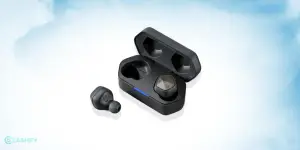Every component in a cooling system is extremely important. The compressor is responsible for compressing the refrigerant gas and offers mechanical energy. Almost all the parts of the refrigerator rely on it.
Compressors play an important role in pressurizing vaporized refrigerant from low pressure and temperature to higher pressure. Depending on how they create the pressure, there are different types of compressors to choose from. In the article below, we will be discussing the different types of refrigerator compressors.
Also Read: Refrigerator Buying Guide In India
How to choose refrigerator compressors?
Choosing the right refrigerator compressors is extremely crucial. Given below are some of the prominent things you must follow in choosing refrigerator compressors:
Application Needs
For refrigeration uses, the compressors must operate under more than one condition. There may be a variable-speed compressor that can be ideal for various applications. The single-stage compressor will operate at 100% capacity. It would help if you considered reliability while selecting single-stage compressors.
There are different compressors available in the market that are available in different shapes and sizes. It is advisable to check the compressor label and specifications to determine how much refrigerant is required. You might as well consider understanding the refrigerant requirements at your specific location.
Furthermore, the pressure medium is also an important thing to consider, which includes- high-pressure, medium-pressure, and low-pressure. This is mostly because the system will determine the discharge pressure and suction. The temperature and pressure will further range depending on how the compressor operates. The high-pressure system will need a compressor that will efficiently function over 23°F or -5°C. On the other hand, the low-pressure compressor systems will need temperatures below -20°C. On the other hand, the medium-pressure compressor system will need to operate between -20°C and -5°C.
Compressor Capacity
Compressor capacity is one of the most important factors to consider. The capacity you choose must be according to the pressure levels and temperature. It is mostly because the volume occupied by the refrigerant vapour molecules will vary according to the pressure and temperature of the system.
The compressor will significantly vary depending on the refrigerator vapour. The number of cylinders and diameter of each will remain constant. The compressor capacity will be expressed in cubic feet per minute (CFM) and cubic feet per hour (CFH). The CFH and CFM ratings will eventually be directly proportional to the compressor’s cooling capacity. Furthermore, the cooling capacity will also be higher with a higher rating.
Apart from these, the horsepower and motor efficiency of the compressor are also important. The compressor with a lower horsepower rating may not be able to meet the capacity requirements of the compressor. Furthermore, you must also keep a check on the low starting torque.
The compressors used in these systems will have capillary tubes and expansion valves. Many compressors have non-equalized pressures that feature high starting torque. As far as the low-starting torques are concerned, they should be used only for pressure equalization and capillary tubes.
Also read: 5 Best Refrigerators Under 10000 In India
Types of Refrigerator Compressors
The compressor is a major element in the refrigerator. The main purpose of the refrigeration compressor is to compress the refrigerant gas. With the help of mechanical energy, it creates a colder temperature.
Some of the prominent types of refrigerator compressors to choose from include the following:
Piston Compressors
Piston Compressors are also referred to as reciprocating compressors. It is one of the most common and easy-to-use compressors. In engineering history, various improvements have been made to ensure the piston compressor functions efficiently.
Piston compressors are easily available in the market in various shapes and sizes. Comparatively, these are the most affordable and easy-to-install alternatives. If you use a piston compressor, you must constantly provide lubrication. However, if any liquid enters the inlet via intrusion, the valves will be prone to rapid destruction.
The piston compressor is a prominent type of positive displacement compressor. It uses a piston to provide high-pressure gas. The crankshaft further drives the piston. It is advisable to regularly maintain the piston of the compressor. The other elements to focus on during the maintenance include the motor and crankshaft. This will play an important role in preventing any mechanical damage. Therefore, piston compressors’ performance will improve with time when maintained regularly.
Scroll Compressors
Scroll Compressors, also referred to as spiral compressors, have been sophisticated and commercialized since the 1980s. These feature the radial movement across mating parts that help to lower the mechanical stress. Furthermore, it also plays an important role in optimizing the contact force when even the smallest particle will get into the compressors.
Even when there is a liquid slug, it will be swept off from the mating components. The vaporization from the scroll compressor will increase but will also have a certain tolerance level for the liquid. The scroll compressors follow a centrifugal force when they are operating.
If there are fewer part numbers, the scroll compressor has less damage and will be easy to maintain. The engine will become more reliable when it supports less torque variation. Furthermore, the output generated will be high as well. On a standard basis, the output for the same ranges from 40kW to 50kW. However, there can be multiple units combined across the parallel.
Screw Compressors
There are various brands producing screw compressors. Most of them either feature single or double helical screws. These screws rotate at a significant speed for compressing the refrigerant gas. It follows a twin-screw configuration system that has attached motors. The matched motors mesh significantly in a common housing system. If you use a screw compressor, the refrigerant will enter and exit through the ports. One of the unique things about screw compressors is that the valves aren’t used.
Comparatively, the matching motors have a high tolerance. Therefore, they can assist effectively with better lubrication and cooling. Both these elements are extremely crucial to the refrigerant system. It is advisable to lubricate the system regularly using oil. Furthermore, the user must also seal the rotor-to-housing and rotor-to-rotor clearance. If the system isn’t lubricated thoroughly, it may become prone to damage.
Screw compressors produce great results. The power range for the screw compressor varies from 20kW to 1,200kW. It is heavier than the piston compressor and needs more space. If the screw compressors are lubricated properly, the operating noise will be significantly reduced. However, as a user, you must know that screw compressor are known for their loudness. Therefore, the placement of the screw compressors should be done accordingly to cut down the loud noise.
Centrifugal Comapressors
Centrifugal compressors are also referred to as radial or turbo compressors. These pressurize the refrigerant as they force the refrigerant via a rotating impeller. The impeller will spin the refrigerant as the speed gradually increases. The increase in speed will further increase kinetic energy.
The kinetic energy generated throughout will further pressurize the refrigerant to pass via a diffuser. This will eventually lead to slowing the radial movement of the vapour. When the radial vapour movement slows down, the converted kinetic energy of the refrigerant will turn into potential energy. The potential energy will further be present as the pressure format.
Centrifugal compressors are known for their large capacity. These are also capable of compressing the huge volume of refrigerant. These are available in variations such as single, double, and multi-stage configurations. It will allow the system to compress and create a higher pressure and temperature. The temperature and pressure range will further depend on the user’s needs.
Also read: 5 Best Double Door Refrigerators In India
Rotary Screw Compressors
The rotary screw compressors have two meshed rotors which work together but rotate in opposite directions. In a rotary screw compressor, the refrigerant enters from the suction port. After entering, the refrigerant gets trapped between the rotating rotors. When the air travels through the rotor, the space volume between the two elements will reduce, eventually allowing the refrigerant to be compressed.
Unlike other compressors, screw compressors do not have valves or use mechanical force. This plays an important role in the high-speed operation of rotary screw compressors. Comparatively, these have a smaller footprint with higher flow rates. As a result, these rotary screw compressors have reduced or lesser vibration.
Rotary Vane Compressors
The rotary vane compressors use the rotating shaft positioned in an eccentrical position across the cylindrical position. It contains a discharge port along with a fixed inlet. The drive shaft of the same contains an adjustable vane. When the drive shaft rotates, the vanes will be sliding in and need constant maintenance.
The inner walls have compressor housing that requires constant maintenance. This results in the formation of chambers of different sizes and shapes. The air will enter through the largest chamber via the inlet port. After that, it will be compressed into the drive shaft so that it rotates at an efficient speed. Eventually, the chamber size will shrink too.
With the chamber shrinking, it will reach the smallest volume. The compressed air in the compressor will exit via the discharge port. The rotary vane compressors will have a compact dimension. Based on the dimension, the compressor will eventually operate accordingly.
As a result, rotary vane compressors are one of the most preferred choices because of their low capacity used. It can be used in residential air conditioning units and household refrigerators. Rotary compressors are mostly used in refrigerant system for the food and beverage industry. Apart from that, these refrigerators will be mostly used across product handling uses.
Reciprocating compressors
The reciprocating compressors have the same design as that of a combustion engine. The individual cylinders of the same will contain two to six pistons. All these pistons have a central crankshaft. The piston will move downward, and the refrigerant will be sucked inside the cylinder via an inlet valve.
The inlet valve will close when the piston moves back in the upward direction. The volume of the space within the cylinder will also decrease, thereby compressing the refrigerant. After a certain point of time, the refrigerant will become compressed. It will need a sufficient amount of force to open the discharge valve. The refrigerant will exit and promote the cycle to be repeated.
Comparatively, the reciprocating customers will be scalable. These can be customized as per the needs- based on the capacity- small or high for the hundreds of tons. However, a major disadvantage of reciprocating compressors is that it is too loud and produces higher vibration. In certain situations, the reciprocating compressors are inefficient.
Also Read: Inverter Technology In Refrigerators Explained
Hermetic compressors
The compressor and motor will have an envelope welded hermetically for an airtight system. It provides an important role in offering protection against various external components. The hermetic compressors do not provide space for opening. Since these cannot easily open for repairs, there will be less risk of replacement which eventually helps to save money.
Semi-hermetic compressor
The semi-hermetic compressor will play an important role in enhancing the design. It will have a compressor and motor across the hermetic envelope. However, this can be easily opened, impacting the repair system. The semi-hermetic compressor features a liquid cooling system. It can be easily integrated across the casing, which provides better thermal control.
Final Point
It would help to consider all these factors while choosing from different types of refrigerator compressors. Choosing a compressor that will meet all the requirements and provide complete efficiency and operational reliability is advisable. If you aren’t familiar with the type of compressor to choose, it is advisable to do some research. Furthermore, the parts and accessories of the compressors are also necessary. You must be familiar with the different types of compressors. Once you’re familiar with the types, things will be easier. You should choose the compressor based on the requirements of your refrigerator.
Also Read: Mistakes To Avoid When Buying A Refrigerator
















